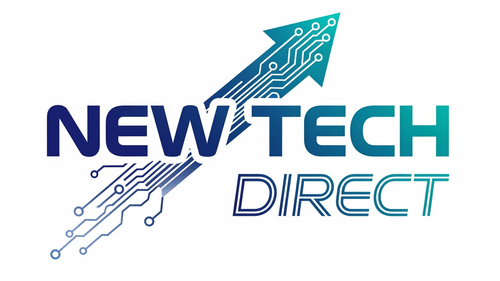Beyond Time Savings: Measuring the True Business Impact of AI

Share
Beyond Time Savings: Measuring the True Business Impact of AI
Artificial Intelligence (AI) is transforming industries at breakneck speed. Virtually every business today—no matter the size or sector—is exploring how AI can enhance efficiency, productivity, and customer engagement. But amidst all the buzz around innovation, one crucial question often remains unanswered: How do we truly measure the success of AI initiatives? While time savings and speed enhancements are great, they barely scratch the surface in terms of business impact. In this article, we’ll explore what it really means to be measuring AI success and how to go beyond basic efficiency metrics to understand the full value AI can bring to your organization.
Why Time Savings Isn't Enough
One of the most commonly cited benefits of AI is its ability to save time. AI algorithms process information faster than humans can, automate tedious tasks, and operate round-the-clock without fatigue. However, focusing solely on time saved may result in a skewed or incomplete view of AI’s value. Yes, your AI chatbot might now resolve queries 20% faster, but the real question is: Is that speed driving better customer retention, higher revenue, or stronger brand loyalty?
This is why businesses need to broaden their performance criteria. Measuring AI success should be centered around meaningful outcomes that align with business strategy—outcomes like cost reduction, elevated user experience, and enhanced decision-making capabilities.
Key Metrics for Measuring AI Success
To measure the true business impact of AI, organizations must look beyond simplistic KPIs and examine deeper, mission-aligned performance indicators. Here are some of the key metrics worth tracking:
1. Revenue Impact
While AI may not be generating revenue directly, its influence on sales and customer lifetime value can be profound. For example, AI-driven recommendation engines can increase average order value through personalized cross-selling and upselling. Predictive analytics can help sales teams identify high-potential leads, improve targeting, and reduce churn rates.
Ask yourself: Are AI tools helping you close more sales? Are they contributing to more accurate forecasting, better pricing strategies, or improved product development? All of these factors can combine to significantly drive revenue.
2. Cost Reduction
One of AI’s clearest advantages is its ability to cut operational costs. From automating repetitive tasks to identifying inefficiencies, AI can streamline workflows and reduce the dependency on human labor for routine functions. For example, chatbots reduce customer support costs by handling common queries, while AI-driven robotics in warehouses cut down on logistics expenses.
When measuring AI success in this area, track labor cost reductions, decreased downtime, and any dips in error rates that could translate into saved resources and fewer customer support tickets.
3. Enhanced Customer Experience
AI solutions are increasingly being deployed to deliver hyper-personalized experiences. Whether it’s a machine learning algorithm that tailors marketing content or a support bot that anticipates a user’s next issue, AI holds the potential to significantly improve customer satisfaction and loyalty.
Metrics to focus on include customer satisfaction scores (CSAT), net promoter scores (NPS), and customer retention rates before and after AI implementation. Delighted customers are more likely to return, refer others, and contribute positively to your brand image.
4. Strategic Capacity and Innovation
AI doesn't just automate tasks—it also unlocks time and resources for high-value strategic initiatives. With more bandwidth, human employees can focus on collaborative, creative, and growth-oriented projects that AI can't handle. This enhanced strategic capacity is one of the least emphasized but most powerful outcomes of AI.
Evaluate whether teams are spending more time on innovation, strategic planning, or customer engagement. Are new business opportunities or markets becoming viable because of freed-up resources enabled by AI? These are critical signals of AI's impact on your organization’s future roadmap.
Tools and Techniques for Measurement
Once you’ve defined your KPIs, you’ll need the right tools and frameworks to measure AI success accurately. Here are a few best practices:
- Analytics Dashboards: Use platforms like Tableau, Power BI, or specialized AI monitoring tools to track AI-driven metrics in real-time.
- A/B Testing: Compare performance before and after AI implementation across key business functions.
- ROI Calculations: Factor in both tangible and intangible returns (like improved employee morale or customer engagement).
- Employee and Customer Feedback: Human insights still matter. Collect data through surveys to understand the perceived impact of AI systems.
Common Pitfalls to Avoid
Jumping into AI without a strategic plan or clear success metrics can result in underwhelming results and wasted investment. Here are some mistakes you'll want to avoid:
- Relying solely on technical metrics like model accuracy, which rarely correlate directly to business goals.
- Focusing only on short-term gains rather than long-term growth and sustainability.
- Neglecting cross-functional involvement and assuming data science teams can define success alone.
- Failing to revisit and adjust KPIs as your AI implementations scale or evolve.
Increase Your AI ROI: A Practical Resource
Implementing AI without a clear strategy for measuring results is like sailing without a compass. That’s why smart business leaders turn to resources that help them zoom out and assess more impactful metrics. One great tool for this is The AI Advantage Bundle.
This practical guide helps you go beyond surface-level metrics, offering a deep dive into how to assess AI’s impact across your organization. It addresses critical questions, such as whether faster response times improve customer retention, and helps you shift focus to metrics that truly drive business outcomes like revenue impact, cost reduction, improved customer experience, and increased strategic capacity. If you're serious about measuring AI success in a meaningful way, this bundle is a must-have.
Final Thoughts: Align AI With Business Goals
Ultimately, AI is only as good as the results it delivers. Focusing solely on efficiency can blind companies to deeper opportunities AI can unlock—opportunities around innovation, customer satisfaction, and long-term sustainability. By aligning your AI strategies with clear, relevant metrics, you not only validate your investment but also unlock the full potential of artificial intelligence to transform your business.
Whether you’re just starting your AI journey or are looking to scale your efforts, remembering to keep your eyes on the true measures of success will ensure your solutions are meaningful—not just novel. Start tracking what matters today, and make every AI deployment part of a smarter, more strategic future.
Meta description: Discover how to go beyond efficiency and start truly measuring AI success. Learn the key metrics that link AI to business outcomes like revenue and retention.
